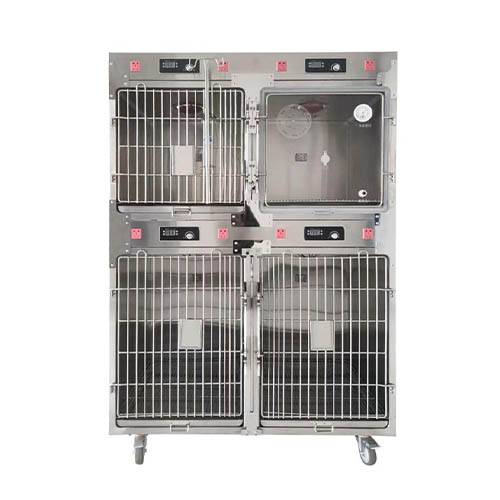Dirección
304 North Cardinal St.
Dorchester Center, MA 02124
Horas laborales
Lunes a viernes: 7:00 a. M. - 7:00 p. M.
Fin de semana: 10 a. M. - 5 p. M.

Los escáneres de ultrasonido veterinarios desempeñan un papel crucial en la atención sanitaria animal moderna, ya que ayudan a los veterinarios a diagnosticar y controlar diversas afecciones en animales de compañía, ganado y vida silvestre. Comprender los fundamentos de estos dispositivos es esencial tanto para los profesionales veterinarios como para los cuidadores de animales. En esta guía completa, profundizamos en las complejidades de los escáneres de ultrasonido veterinarios, cubriendo su funcionalidad, aplicaciones, beneficios y más.
What is a Veterinary Ultrasound Scanner?Veterinary ultrasound scanners are medical imaging devices that utilize high-frequency sound waves to generate images of internal body structures in animals. These images, known as sonograms or ultrasounds, provide valuable insights into the health and condition of organs, tissues, and fetuses.
How Do Veterinary Ultrasound Scanners Work?Veterinary ultrasound scanners emit sound waves into the animal’s body, which bounce back to create echoes. These echoes are then interpreted by the scanner to produce real-time images on a monitor. The density and composition of tissues affect the speed at which sound waves travel, resulting in variations in image contrast and clarity.









Diagnostic Uses in Veterinary MedicineVeterinary ultrasound scanners are employed for various diagnostic purposes, including examining abdominal organs, assessing cardiac function, detecting pregnancies, identifying tumors or abnormalities, and guiding needle biopsies or procedures. Their non-invasive nature and real-time imaging capabilities make them invaluable tools in veterinary diagnostics.
Monitoring and Reproductive ManagementIn reproductive medicine, veterinary ultrasound scanners are utilized to monitor the reproductive cycles of animals, evaluate fertility, detect early pregnancies, and assess fetal development. They enable veterinarians to provide tailored reproductive management strategies for breeding programs and assist in ensuring the health and well-being of both the mother and offspring.
Choosing the Right Veterinary Ultrasound ScannerWhen selecting a veterinary ultrasound scanner, several factors must be considered, including frequency range, image resolution, portability, ease of use, and compatibility with different animal species and applications. Understanding these features helps veterinarians and animal healthcare providers make informed decisions that meet their specific needs and requirements.

| Característica | Máquina de ultrasonido para animales 5600 | Máquina de ultrasonido para animales 580 |
|---|---|---|
| Rango de frecuencia | Alto | Medio |
| Image Resolution | Alto | Medio |
| Portabilidad | Portable | Portable |
| Facilidad de uso | Intuitive | Moderado |
| Compatibilidad | Multi-species | Limitado |
P: ¿son veterinary ultrasound scanners safe for animals?
A: Yes, ultrasound imaging is considered safe for animals, as it does not involve ionizing radiation or invasive procedures.
Q: Can ultrasound scanners be used on all animal species?
A: While ultrasound scanners can be used in many species, variations in anatomy and body size may affect imaging quality in certain animals.
Q: How much does a escáner de ultrasonido veterinario ¿costo?
A: The cost of veterinary ultrasound scanners varies depending on features, brand, and model, ranging from a few thousand to tens of thousands of dollars.
Q: Do veterinary ultrasound scanners require special training to use?
A: Yes, proficiency in ultrasound imaging requires training and practice to obtain accurate and diagnostic images.
Q: Can ultrasound scanners detect all types of medical conditions in animals?
A: While ultrasound is a powerful diagnostic tool, it may not detect certain conditions, such as bone fractures or intestinal blockages, which may require additional imaging modalities.
En conclusión, veterinary ultrasound scanners are indispensable tools in modern animal healthcare, offering non-invasive imaging solutions for diagnostic, monitoring, and reproductive management purposes. By understanding the principles behind these devices and their applications, veterinary professionals can enhance their clinical capabilities and provide optimal care for their animal patients.
This comprehensive guide aims to demystify veterinary ultrasound scanners, providing insights into their functionality, applications, key features, and considerations for selection. Whether you’re a veterinary professional or an animal caregiver, understanding the role of ultrasound in veterinary medicine empowers you to make informed decisions and promote the health and well-being of animals.
